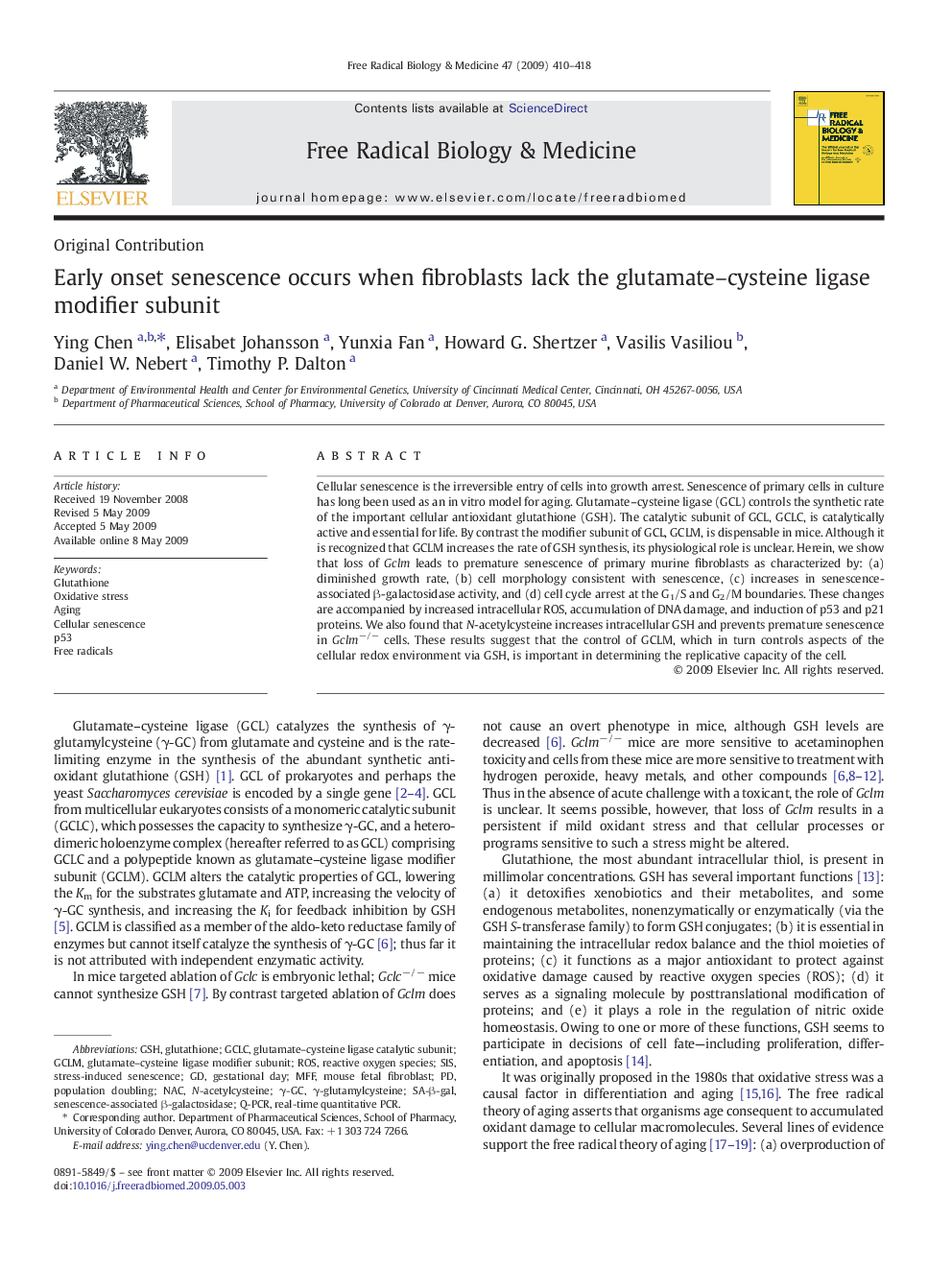| کد مقاله | کد نشریه | سال انتشار | مقاله انگلیسی | نسخه تمام متن |
|---|---|---|---|---|
| 1910635 | 1046780 | 2009 | 9 صفحه PDF | دانلود رایگان |

Cellular senescence is the irreversible entry of cells into growth arrest. Senescence of primary cells in culture has long been used as an in vitro model for aging. Glutamate–cysteine ligase (GCL) controls the synthetic rate of the important cellular antioxidant glutathione (GSH). The catalytic subunit of GCL, GCLC, is catalytically active and essential for life. By contrast the modifier subunit of GCL, GCLM, is dispensable in mice. Although it is recognized that GCLM increases the rate of GSH synthesis, its physiological role is unclear. Herein, we show that loss of Gclm leads to premature senescence of primary murine fibroblasts as characterized by: (a) diminished growth rate, (b) cell morphology consistent with senescence, (c) increases in senescence-associated β-galactosidase activity, and (d) cell cycle arrest at the G1/S and G2/M boundaries. These changes are accompanied by increased intracellular ROS, accumulation of DNA damage, and induction of p53 and p21 proteins. We also found that N-acetylcysteine increases intracellular GSH and prevents premature senescence in Gclm−/− cells. These results suggest that the control of GCLM, which in turn controls aspects of the cellular redox environment via GSH, is important in determining the replicative capacity of the cell.
Journal: Free Radical Biology and Medicine - Volume 47, Issue 4, 15 August 2009, Pages 410–418